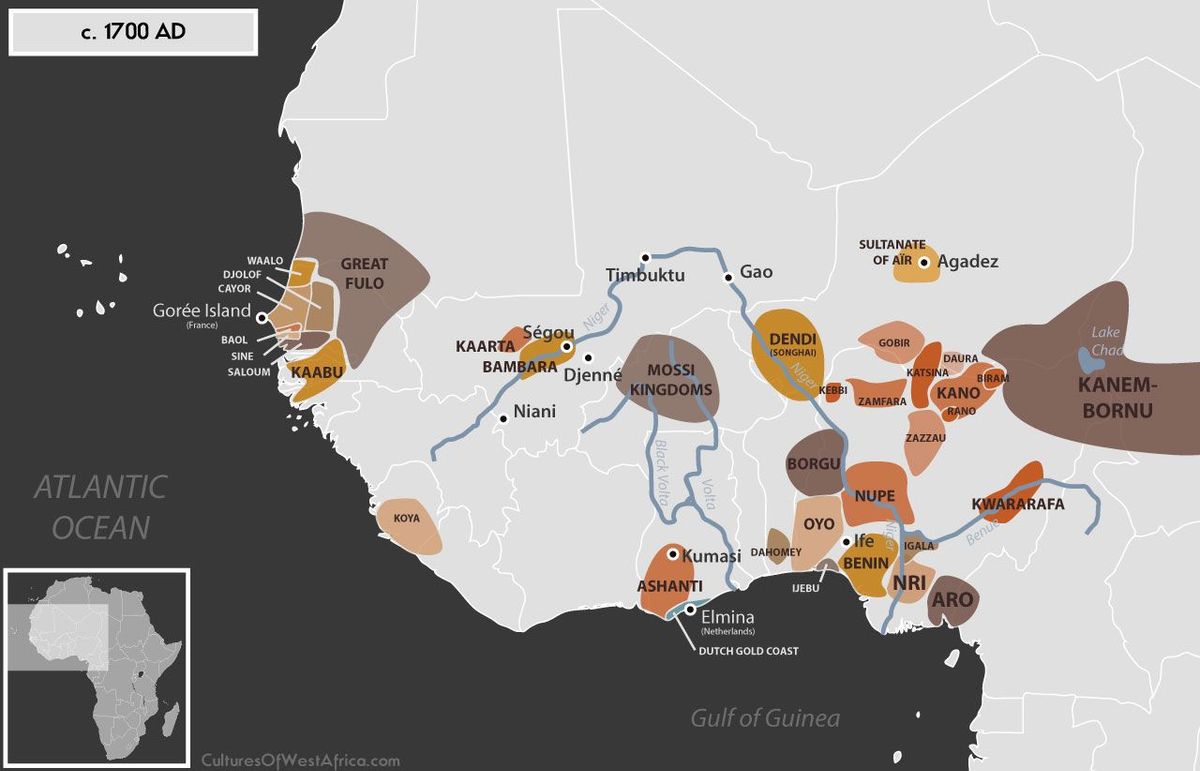For the past century, Africa has been a continent plagued with stereotypes concerning its development from the western point of view. Although African nations have struggled with some type of conflict since their independence in the 20th century, leading to devastating impacts such as increased mortality and displacement of populations, this purpose of this article is to bring emphasis to the continent's story other than that of bloodshed and poverty, which is largely unknown to many. The specific region of West Africa is zoomed into as I live there and have had the opportunity to accumulate knowledge in relation to its history.

Population
When trying to discern development of regions in the past(where the use of GDP was absent)Historians tend to base their propositions on Population. This is due to the nature of Population growth as it means there is a larger pool of labour allowing for increased production and so more goods being supplied potentially leading to domestic growth.
One of the main indicators of a large population is the presence of cities as urbanisation and population density are linked. Contrary to the popular belief of Africa being a ‘dark continent’ without history, West Africa encompassed various urban centres, for example: Jenne, Timbuktu, Ile-Ife etc. This urges some to ask what factors facilitated the growth of these cities and in turn their regional markets? I believe the main reason is West Africa’s strategic location between sources of valuable raw materials and traders from North of the continent that wanted to meet demands of the Mediterranean and West Asian elites. Specifically The Niger River which allowed for navigable transport links connecting the gold and copper mines of the guinea region of West Africa and the savannah that had diplomatic relations with the Arab and Amazigh communities of the Maghreb. An example of the Urban centres connecting the subregions of West Africa was Bono Manso, located in Modern day Ghana, it acted as a satellite city of the Mali empire that supplied Gold, kola nut etc. into the empire, thereby highlighting the complex inter regional trade present in West Africa.

West Africa’s Turning Point

Now that I've been able to highlight an aspect of West Africa's economic history that opposes the stereotypical assumptions about its economic development, one is confronted with the reasons for West Africa's turning point from that of an intraregional model to poverty and the Modern ECOWAS union, which has failed to meet some of its aims in promoting integration. This can be attributed to a range of different similar and contesting factors; however, the focus will be on one.
MALARIA-
As of 2021 Children below the age of 5 contributed to 80% of Malaria deaths on the African continent according to the WHO AFRICAN REGION. This is significant due to the permanent neurological effect malaria can have on children such as Cognitive Impairment which can result in poor academic outcome, in turn this affects the economy as it might urge parents to invest less resources on their children and so lead to absenteeism, this reduces the amount of citizens being educated and so lacking the skills required for certain professions therefore causing a low contribution to the Quaternary sector of a nation’s economy.
From reading this I hope I was able to present a more nuanced understanding of Africa’s economic development over different time periods through an objective lens while zooming into specific causes and effects.


